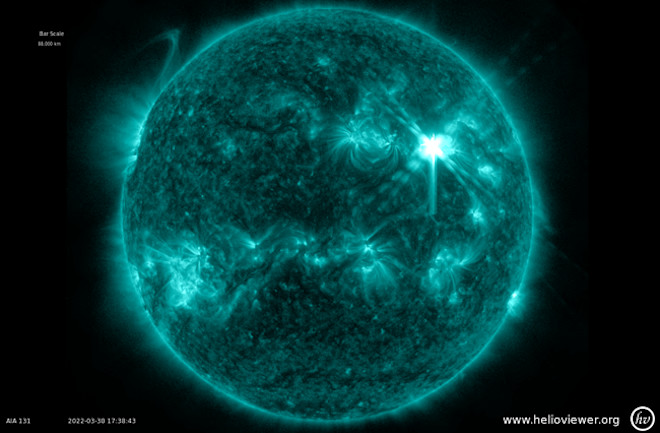The Sun is getting downright ornery!
Gargantuan Explosions Rock the Sun, Launching a "Cannibal" Cloud of Gas Toward Earth
Not to worry! This is completely normal, and the "cannibal" could trigger beautiful northern lights.

The Sun unleashed an X-class solar flare — the most intense kind — on Wednesday, March 30, 2022, as seen here in an image from NASA's Solar Dynamics Observatory spacecraft. Eruptions of gas associated with flares that exploded two days earlier may bring beautiful northern lights displays late on March 30th and early on the 31st. (Credit: Helioviewer)
Newsletter
Sign up for our email newsletter for the latest science news
0 free articles left
Want More? Get unlimited access for as low as $1.99/month
Stay Curious
Sign up for our weekly newsletter and unlock one more article for free.
View our Privacy Policy
Want more?
Keep reading for as low as $1.99!
Already a subscriber?
Find my Subscription
More From Discover
Stay Curious
Subscribe
To The Magazine
Save up to 40% off the cover price when you subscribe to Discover magazine.
Copyright © 2025 LabX Media Group

